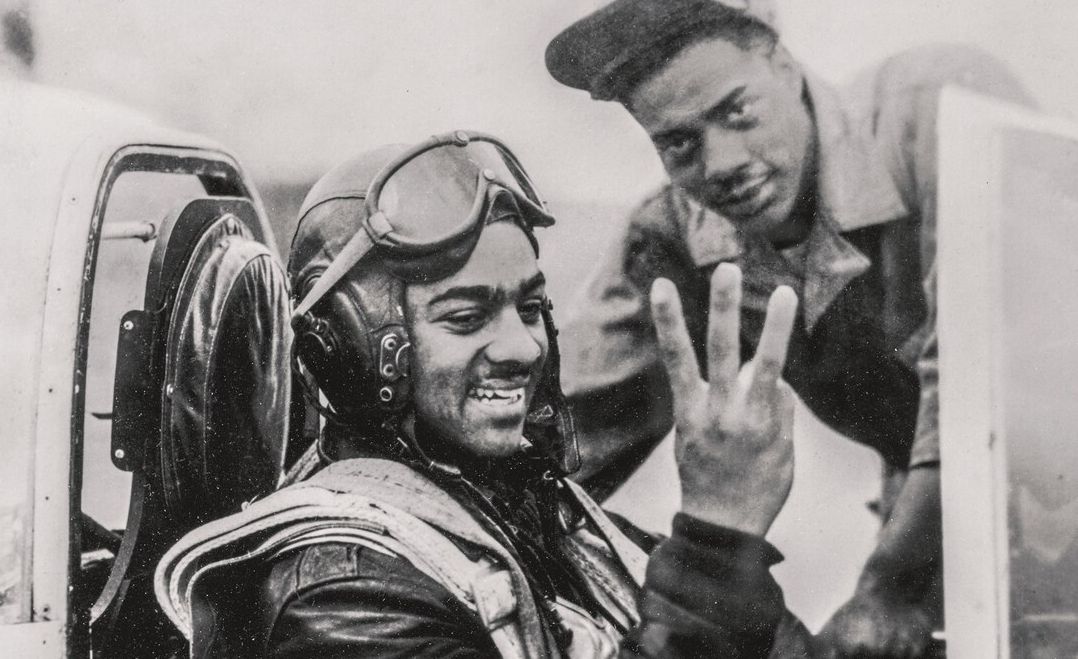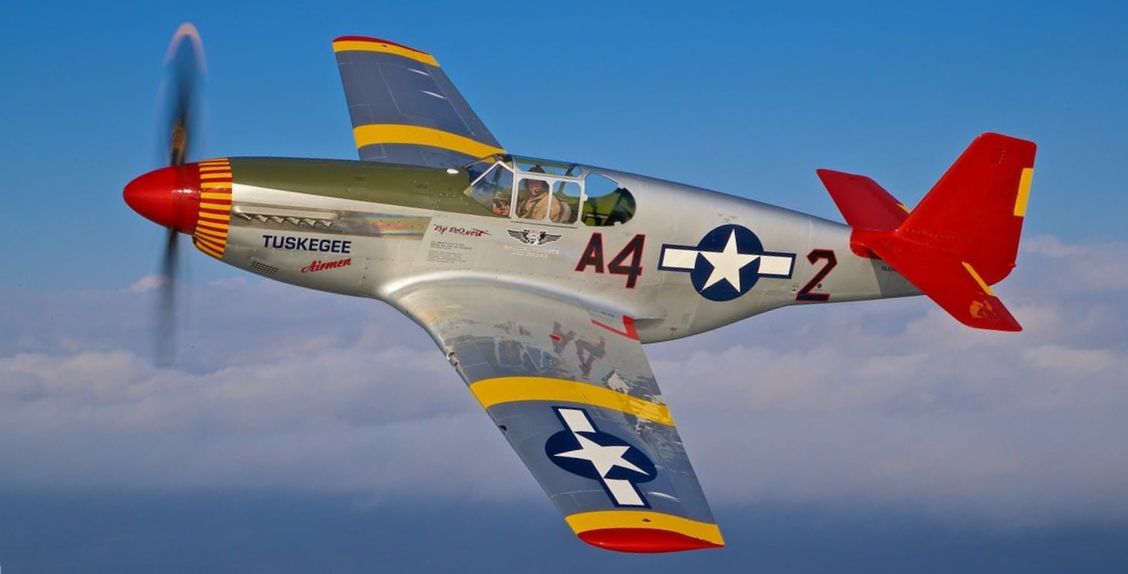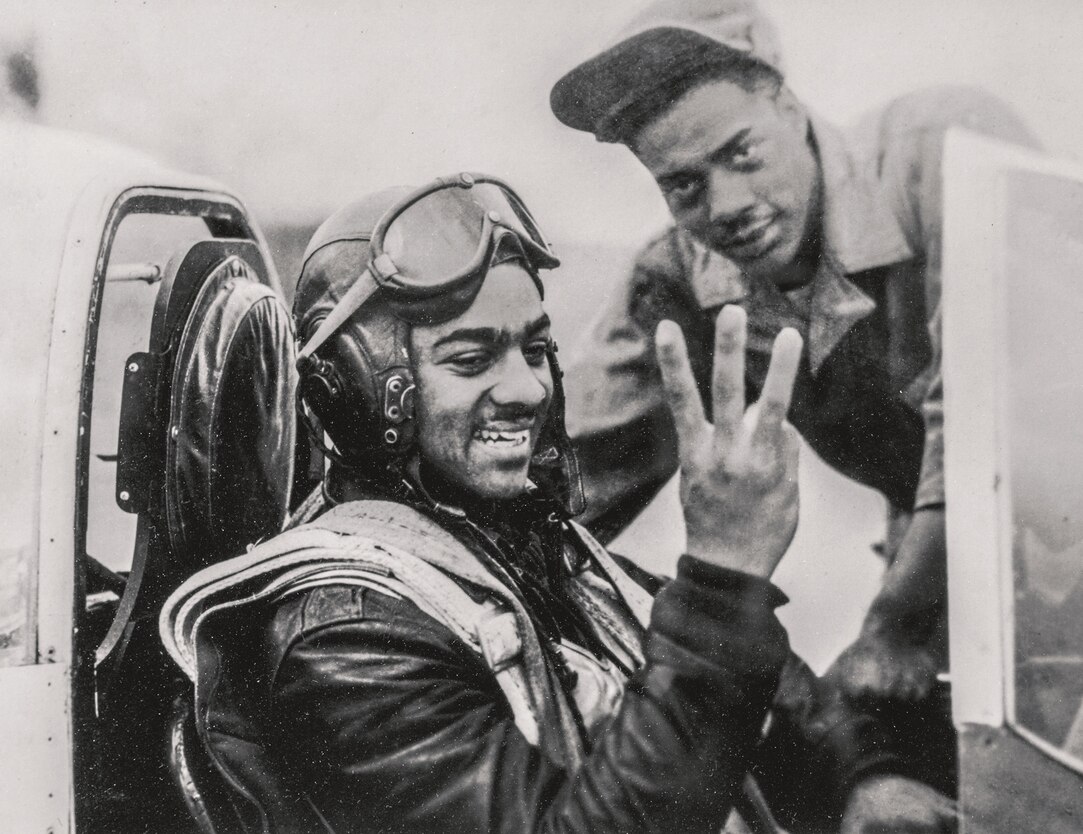Authors:
Historic Era: Era 8: The Great Depression and World War II (1929-1945)
Historic Theme:
Subject:
Summer 2023 | Volume 68, Issue 4


Authors:
Historic Era: Era 8: The Great Depression and World War II (1929-1945)
Historic Theme:
Subject:
Summer 2023 | Volume 68, Issue 4
Editor’s Note: A longtime pilot and aviation historian, Philip Handleman is co-author with Lt. Col. Harry T. Stewart, Jr. of Soaring to Glory: A Tuskegee Airman’s Firsthand Account of World War II, from which he adapted portions of this article.
Lt. Harry Stewart was flying five thousand feet over the Luftwaffe base at Wels, Austria with six other Tuskegee airmen in their distinctive red-tailed P-51 Mustangs when someone in his squadron yelled that there were four German fighters below. The Americans should have been more than a match for them.
“Our seven Mustangs cranked over in a mass dive on the enemy aircraft,” Harry recalls. But, suddenly, the hunters turned into the hunted as “the sky filled with at least another dozen fighters bearing Luftwaffe insignia.”
The enemy planes they initially spotted were decoys. The Americans had been lured into an ambush. The irony of the date was not lost on Harry. It was April 1, 1945 – April Fool’s Day.
The confrontation was certain to end with some of the planes zooming down from the sky in spectacular crashes. Harry began breathing heavily. Everything was happening so fast now.

Barely out of his teens and never before engaged in a dogfight, Harry was almost overwhelmed by the thoughts flashing through his mind. There was the anger at having been suckered into a trap. There was the terror of the high-stakes dueling about to transpire. Then, the instinct for survival kicked in. The young pilot’s fear and doubt, a sinking feeling in the pit of his stomach, gave way to a fierce determination, bolstered by his training.
Just days before, Harry had been promoted to first lieutenant. But matters of rank were the furthest thing from his mind as he locked eyes on the two enemy planes beneath him. He advanced toward his prospective quarry as individual skirmishes broke out among the other combatants.
As Harry bore down on the tails of the planes in front of him, he saw that they were the long-nosed Focke-Wulf Fw 190D-9s, known as the “Dora-Nines” and considered the finest piston-powered fighters in the Luftwaffe’s arsenal.
The Mustang’s speed brought Harry within firing range. He concentrated on the closer of the two German aircraft, then squeezed off a few short bursts from his six wing-mounted .50-caliber machine guns.
D-9 appears to be a late production aircraft built by Fieseler at Kassel. It has a late style canopy; the horizontal black stripe with white outline shows that this was a II. Wikipedia." data-entity-type="file" data-entity-uuid="1cb82888-1088-4125-ba92-6a63e119b9ac" src="https://www.americanheritage.com/sites/default/files/inline-images/FW190-D9.jpg" width="909" height="397" loading="lazy">
Smoke and flames suddenly sprouted from the Dora-Nine’s fuselage, imprinting a ghastly picture in Harry’s memory.
As events evolved in fractions of a second, Harry knew only to stay on the fighter’s tail. He contemplated another burst. But the plane in his gunsight had already started to break apart. An eagle’s wings had been clipped; the staff officers at Allied intelligence could scratch off one more Luftwaffe fighter.
But there was no time to relax and savor this victory. There was another enemy fighter dead ahead. When the second Luftwaffe pilot realized what had happened to his trailing wingman, he yanked his plane hard right in an attempt to shake Harry off his tail. But Harry turned just as tightly, pulling high Gs which stretched the Mustang to the limits and pressed him down in his seat.
The high-G maneuvering made Harry sweat like hell. In another fleeting second, he trained his sight on the tail of the bolting fighter and squeezed off a burst. An instant later – in a sight that would also be seared in Harry’s memory – the plane started to dissemble “in a cloud of black smoke and orange flame just like the first one.”
Harry had scored his second victory of the day. But, before he could even breathe a sigh of relief, he heard a squadron mate’s urgent call: “Bandit on your tail!” It was the voice of Carl Carey, another Red Tail who had scored against two of the Dora-Nines himself.
Just then, tracer rounds started to whiz past Harry’s cockpit. They were frightfully close. The sinking feeling in his stomach came back.
Harry used his fighter’s speed again, hoping to outrun his new opponent. But the pilot of the Focke-Wulf was tenacious. With the enemy glued to his tail in a sprint at treetop height, Harry made an extreme right turn. The German plane followed him, turning and turning in a test of strength and will, the G-forces almost unbearable.
Men and machines were ratcheted to the limits of their capacity. Something had to give. Then, in the next moment, Harry realized that he was free.
